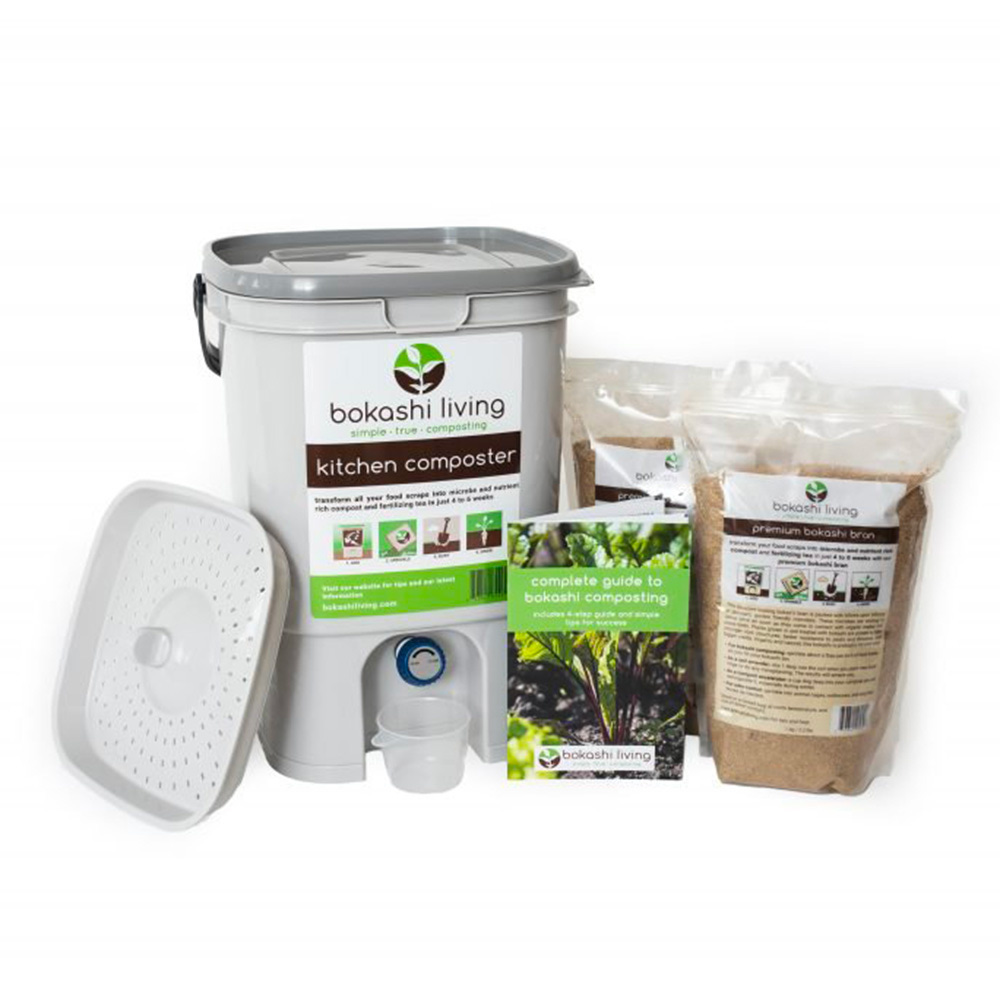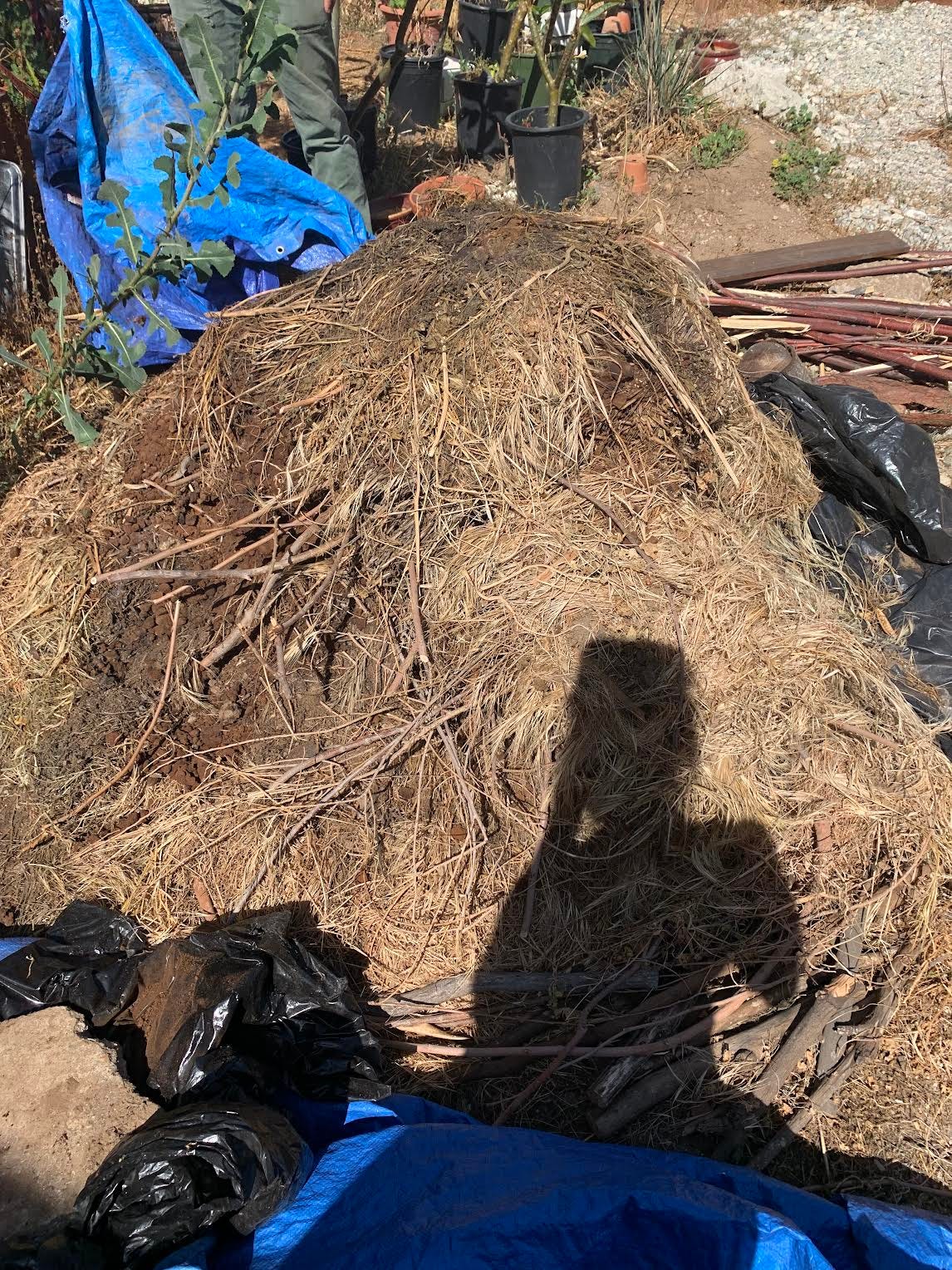The bokashi process and indoor composting
e.g. a letter regarding the persistent struggle with how to decay in small spaces.
I just moved again and, for the first time since living in Los Angeles, I do not have my own backyard. Instead, I live in a small one bedroom apartment in Echo Park, top floor, above a shared outdoor space and under strict rule handed down from the landlord: “No compost.”
No. Compost.
Many of the people who write to me with questions about compost live in small spaces in big cities with lots of neighbors to worry about, in addition to rats. I am constantly telling these people that they can still compost and that they don’t need to shell out for an expensive electric countertop device to do it. I’m saying “it’s fine, it’s fine” and “don’t overthink it.” Then I’ve gone about my business in my own big backyard, happily tending my gigantic compost pile. No more. Now, I’ll be forced to put one of my most controversial stances to the test—which is composting under-the-sink using just a bag and some sawdust.
Or—I might just opt for bokashi.
Bokashi is the process of composting by fermentation. Organic waste is layered into an air-tight bucket equipped with a spigot and then mixed with a special bokashi inoculant (ingredients: bran, molasses, and microorganisms like yeasts, photosynthetic bacteria, actinomycetes, and fungi). This concoction is then set aside and left alone. You’ll want to open the spigot on a daily basis to drain off any liquid that forms, but other than that—don’t touch it. After ten days, your waste will be successfully fermented and can either be dug into garden soil or thrown into a compost pile to finish breakdown. The liquid that you’ve drained off during the process can be diluted and used to water houseplants. You can make your own bokashi bucket and buy the bokashi inoculant or you can purchase a complete kit, which will range in cost from around $50 to a little over $100.

All-in-all, it’s a tidy, apartment-sized solution for managing your food waste in an environmentally-responsible fashion without too much effort—but there are, of course, both “pros” and “cons” to the process. On the “pro” side: Bokashi can handle meat and dairy products, it doesn’t smell, and the final product is more nutrient-dense because you’re losing fewer nutrients to gaseous emissions, which are a natural byproduct of any aerobic compost pile. The “cons” are that you still need somewhere to do something with the finished product and if you don’t have a yard for composting, I presume you do not have a garden.
(I certainly do not.)
If I choose to go the bokashi route, I’ll probably ferment at home and then garden with the output at a friend’s house, but there are some best practices for fertilizing with food scraps—even pickled ones. Primarily, you don’t want to use them as top-dressing or mulch, like you might with regular compost. Dig a trench a few feet away from your plants and bury them there, ensuring that they’re thoroughly covered. The remains will gradually break down and infuse the surrounding area with nutrients. This book is a helpful and short guide if you’d like more information.
Now, naturally there is some discourse within the composting community about whether or not bokashi qualifies as “compost,” as it doesn’t involve any actual decomposition. Fair. I am mostly ambivalent when it comes to categorization, but I do think—at minimum—that bokashi is one of many vital tools we can leverage in our collective pursuit of purposeful decay.
I’ll let you know how my experiment nets out.
Love,
Cass




It kind of broke my heart a little to read that no composting was allowed at your current place but eager to hear how trying this new way of composting works for you. I, too, read about the bokashi process. Have been curious about it. Look forward to what you will have to say about it. Meanwhile, I encourage composting in all forms to feed unhealthy soil everywhere. I recently took a driving trip (electric car 👍) from Ca to Wa. I was saddened to see the soil killing, disk tilling on farm land. All I could see was a lot of dust and depleted soil left behind. If I am wrong about that, please correct me but I don’t think so. I was happy to come home to my healthy compost which I immediately added all the watermelon rinds and strawberry tops to. It’s a good thing.